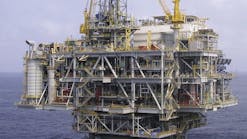Ten years ago, analysts ran fevers over expectations about global oil consumption. A forecast would appear from, say, the US Energy Information Administration indicating oil demand in 2020 at 119.6 million b/d, and many of them would pop their safety valves. They'd see no way to meet demand of 120 million b/d of oil when supplying the 76-million-b/d market of the day already strained the system. Replacing production from a depleting resource was difficult enough. How could anyone expect the world to offset 20 years' worth of depletion and also produce 44 million b/d more?
Part of the answer was that it wouldn't have to do so. Difficulty of supply relative to demand always raises price, which always moderates demand, which lowers the hurdle.
Falling demand forecasts
Expectations have followed this trajectory. By 2006, EIA was projecting worldwide liquids consumption in 2020 at a level 15.5 million b/d below what it had forecast 5 years earlier. Against average demand in the year of that forecast of 84.5 million b/d, the supply challenge, measured as projected vs. contemporaneous consumption, had shrunk to 19.6 million b/d. Last year it narrowed again, to 10.02 million b/d, as EIA forecast global liquids consumption in 2020 at 98 million b/d.
Demand thus does its part to solve a problem that 20 years ago looked insurmountable. But what about supply? Geology hasn't changed much since 2001. Resources are still depleting. Does the world not still face a 10 million b/d problem?
Not if it can add 17.6 million b/d of production capacity in the next 8 years, as Leonardo Maugeri says it might do. Maugeri, a research fellow at the Harvard Kennedy School's Belfer Center for Science and International Affairs, has published results of research, based on field-by-field analysis, indicating supply capacity is increasing so fast it might outrun consumption.
Maugeri wrote the 2006 book The Age of Oil: The Mythology, History, and Future of the World's Most Controversial Resource while group senior vice-president, strategies and development at Eni SPA. His new work takes account of what he calls the "de-conventionalization" of oil supplies as production grows from US shales and other tight formations, Canadian oil sands, Venezuelan extra-heavy crudes, and Brazilian presalt discoveries.
His analysis sees unrestricted additional production possible from the studied fields of more than 49 million b/d of crude oil and natural gas liquids by 2020—a 47% increase from the current level. Adjusted for project risks, the total drops to 29 million b/d. Depletion and reserves growth on balance yield the 17.6 million b/d net production capacity increase Maugeri sees possible in 8 years—to 110.6 million b/d. That's 12.6 million b/d more than last year's EIA projection of 2020 consumption. As Maugeri notes, the surge in production capacity "could lead to a glut of overproduction and a steep dip in oil prices."
Over time, prices would recover. Of lasting importance is the thorough reversal of oil supply expectations technology has made possible by enabling production from unconventional resources. Things have changed fundamentally and forever since those worries about shortage 10 years ago.
Geographic change
The geography of oil supply is changing, too. After adjustments for risks, depletion, and reserves growth, Maugeri says, countries with the highest potential for growth in production capacity are Iraq, the US, Canada, and Brazil. "This is a novelty," he adds, "because three out of four of these countries are part of the Western Hemisphere, and only one—Iraq—belongs to the traditional center of gravity of the oil world, the Persian Gulf." Twenty years ago, most analysts thought all new net production had to come from the gulf.
This sharply changed supply outlook comes with conditions. Large among them is the need by much of the expected new production capacity for an oil price of $70/bbl. Maugeri says the supply surge might lower prices. But technology is overhauling supply prospects. It can change price thresholds, too—and probably will.
More Oil & Gas Journal Current Issue Articles
More Oil & Gas Journal Archives Issue Articles
View Oil and Gas Articles on PennEnergy.com


